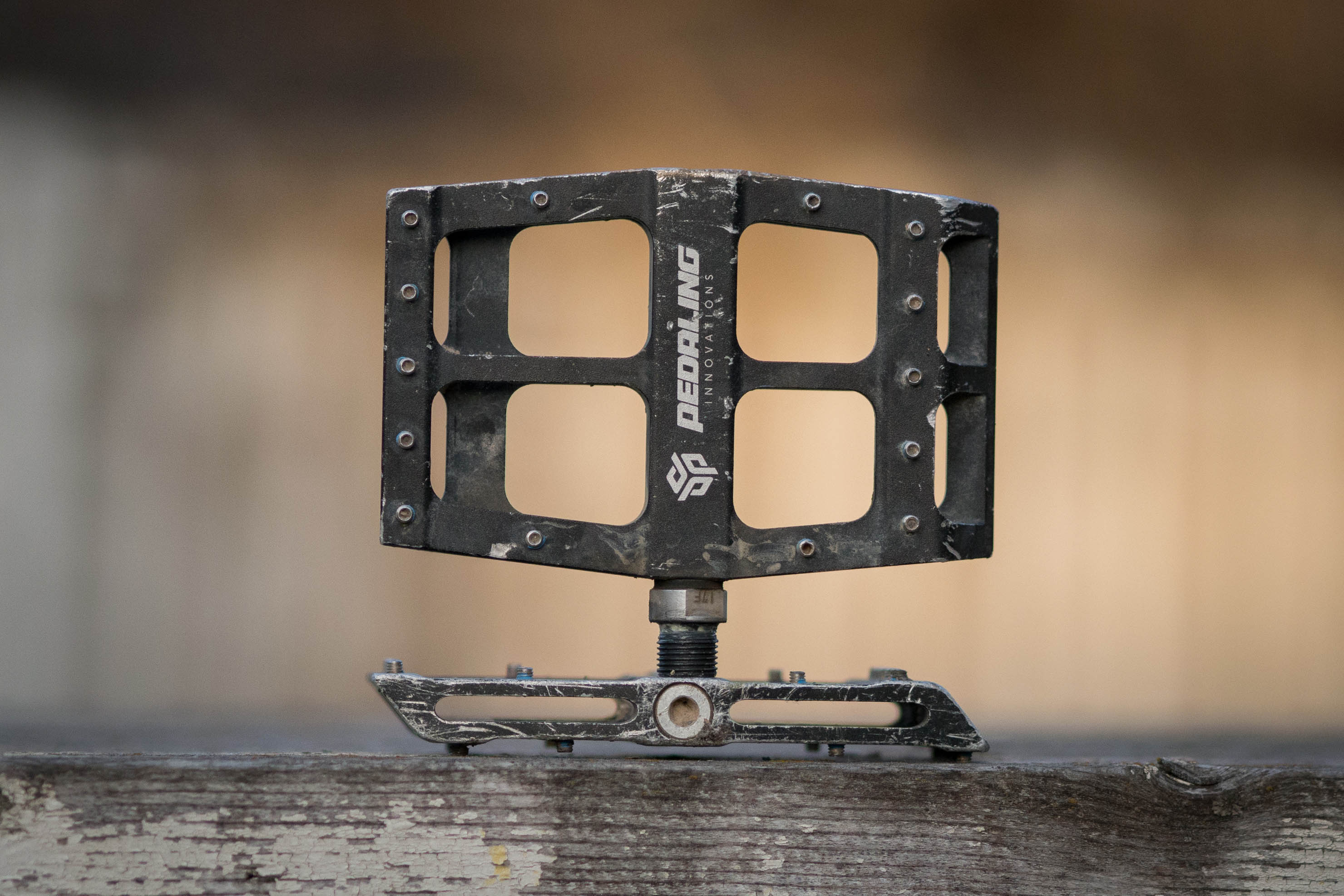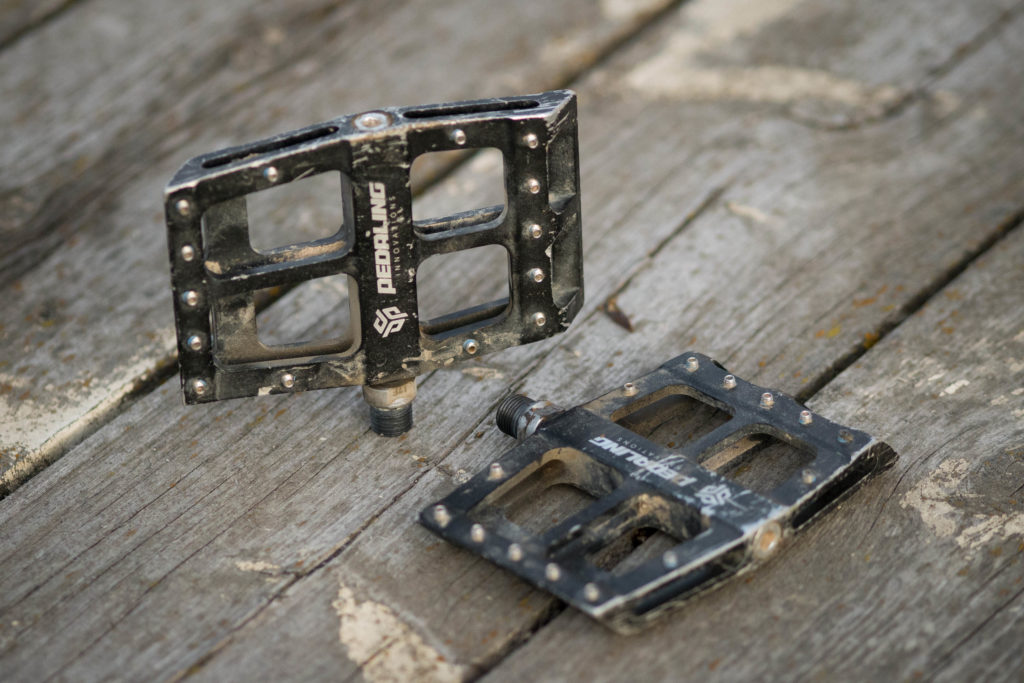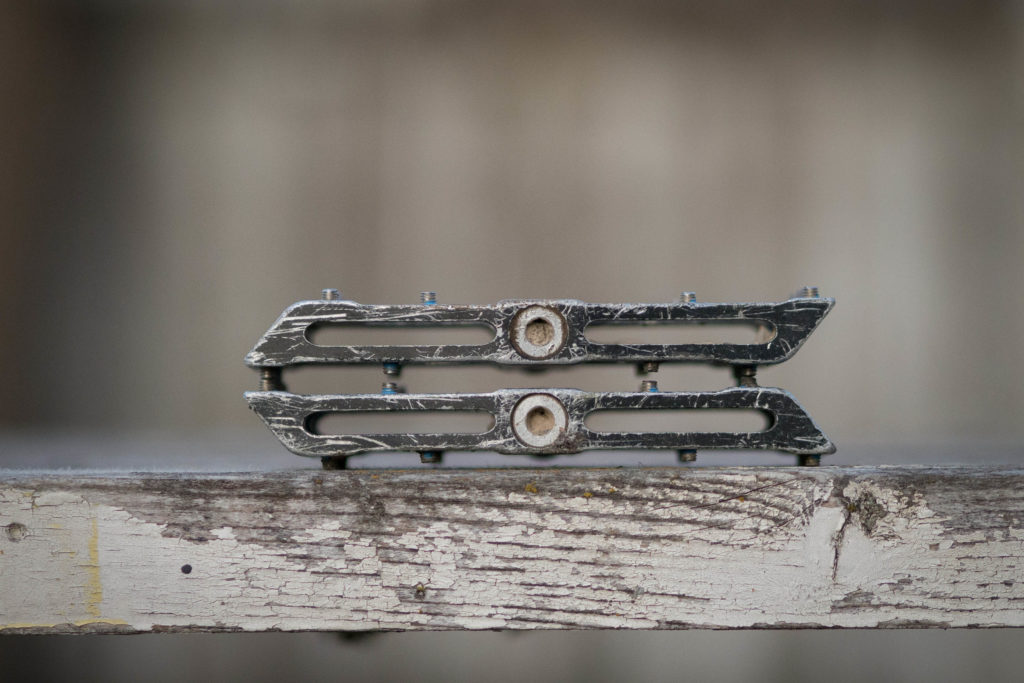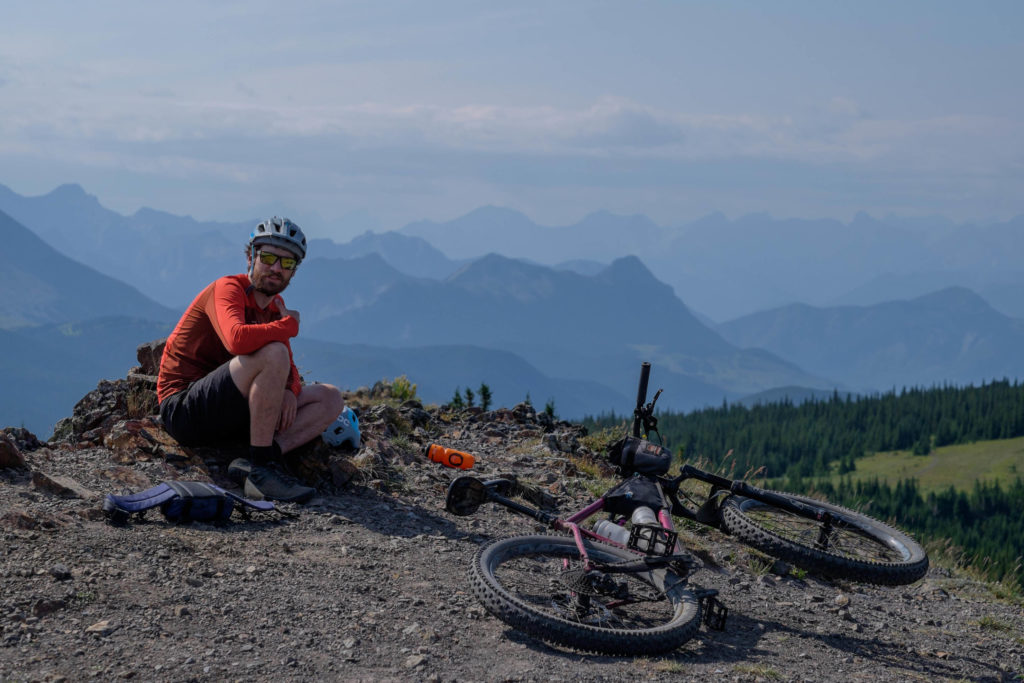Pedaling Innovations Catalyst Review: Big Platform Pedals
Interested in a large platform pedal? How about a massive platform pedal. Pedaling Innovations’ Catalyst promises a more comfortable ride and better performance with their 143mm design. Skyler Des Roches tested a pair over thousands of miles to see if those claims hold water.
PUBLISHED May 8, 2018
“Wow. Those pedals are huge!”
Yes, thanks. I know these pedals are huge. That’s their deal. They’re huge pedals. The largest pedals on the market, measuring front to back, in fact. And, yes, I know, the brand name is fittingly obtuse. Pedaling Innovations: they’re pedals, and they’re innovative. But are they really?
Pedaling Innovations’ Catalyst pedal is notable for its 143mm length – that’s at least 18mm longer than the next largest pedal I can think of – and its ability to garner comments on the trail. Strangers sometimes simply pointed out their size, as if this was revelatory. My riding friends were typically less reserved, likening them to orthopedic equipment for geriatrics, or those weird round-bottom shoes (I ride with jerks). But, in truth, there is some orthopedic reasoning behind the size of these “dumb giant pedals”.
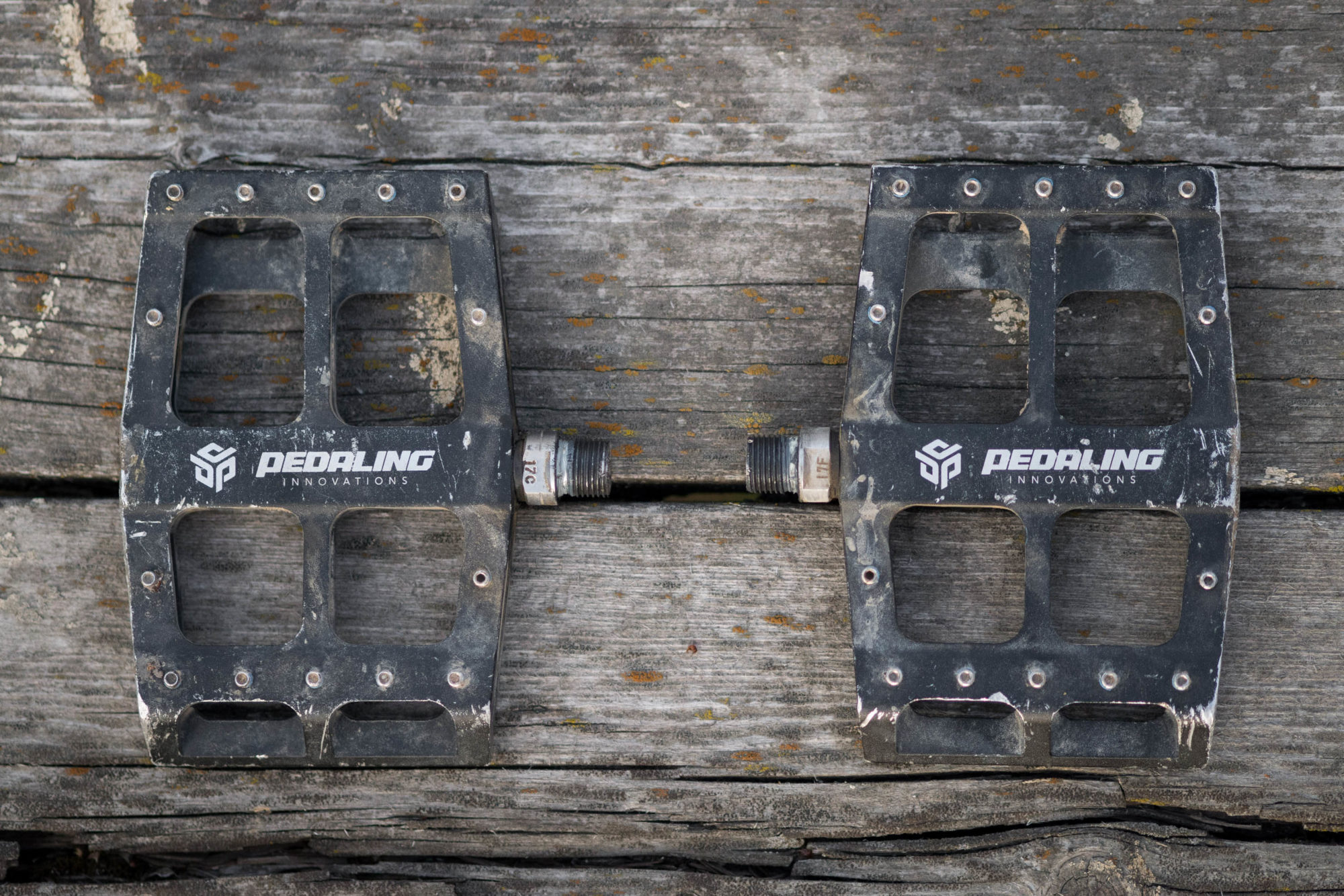
I spent the greater part of a year, with plenty of mountain bike rides, a few singetrack-heavy bikepacking trips, some commuting, and one tough month-long trip testing these pedals to see if the benefits promised by Pedaling Innovations stand up. You’d think I’d be able to tell quicker than that, but (A) long term durability is a key factor for me when it comes to recommending pedals for bikepacking, and (B) testing the Catalyst pedals was complicated by the fact that they’re not just large pedals. These pedals come with a prescription for a mid-foot pedaling position. That is, you’re meant to stand on them so that the spindle is more or less under the middle of your foot.
The innovation in the name comes not so much from the size of these pedals, but from this prescription for a mid-foot pedaling position. Although, this pedaling position isn’t actually new. I’ve been placing my feet on all sorts flat pedals like this for years, but this is the first pedal designed specifically for the idea. And besides, companies just love to throw that I-word around.
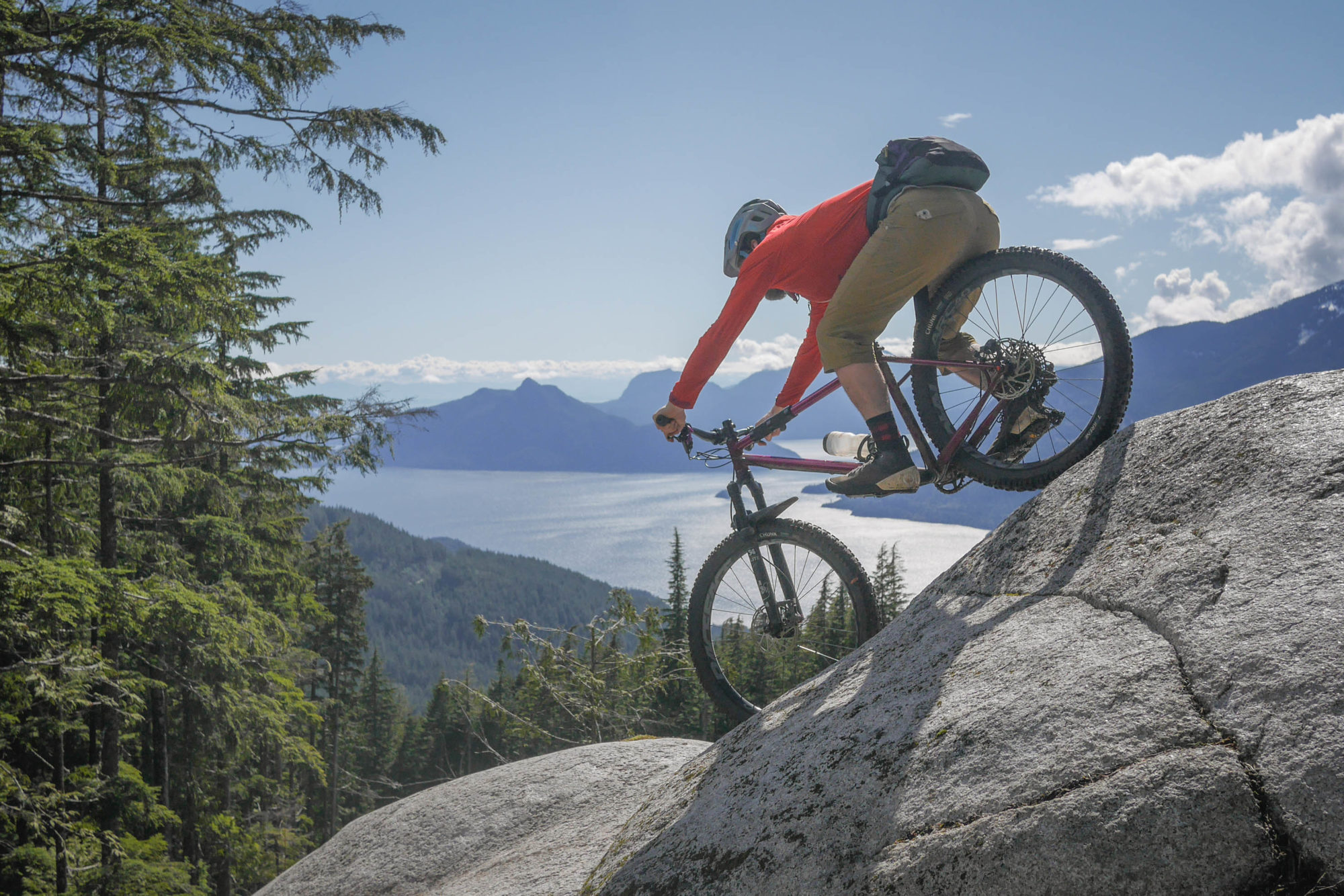
A mid-foot pedal position
According to Pedaling Innovations founder James Wilson, this pedaling position promises more efficient and powerful pedaling, by taking stress off small muscles in the ankle and knee, and recruiting larger muscles in the hips and upper legs to do all the work. I do indeed find this to be the case with a mid-foot pedaling position. This benefit has been apparent to me with conventionally sized pedals, too. But the Catalyst’s huge length certainly provides a nice large platform for mashing down on. Furthermore, the length of the pedal supports the foot more fully, which I found to reduce foot fatigue on long, rough descents, and when wearing softer-soled footwear.
The key point of this review is perhaps this: the mid-foot pedaling position works. Without a doubt, I can tell that my legs last longer, and that I can lay down more power when riding like this. It is complicated by one little caveat, however: by sliding your foot forward on the pedal, you are effectively changing your bike’s geometry.
Lately, bike reviewers (myself included) have been paying far more attention to a bike’s seat tube angle, and the effect it has on pedaling position. I have been a strong proponent for steeper seat tube angles, to the point where I had custom DaamBuilt hardtail built with a rare combination of geometry, centered around an unusually steep seat tube angle.
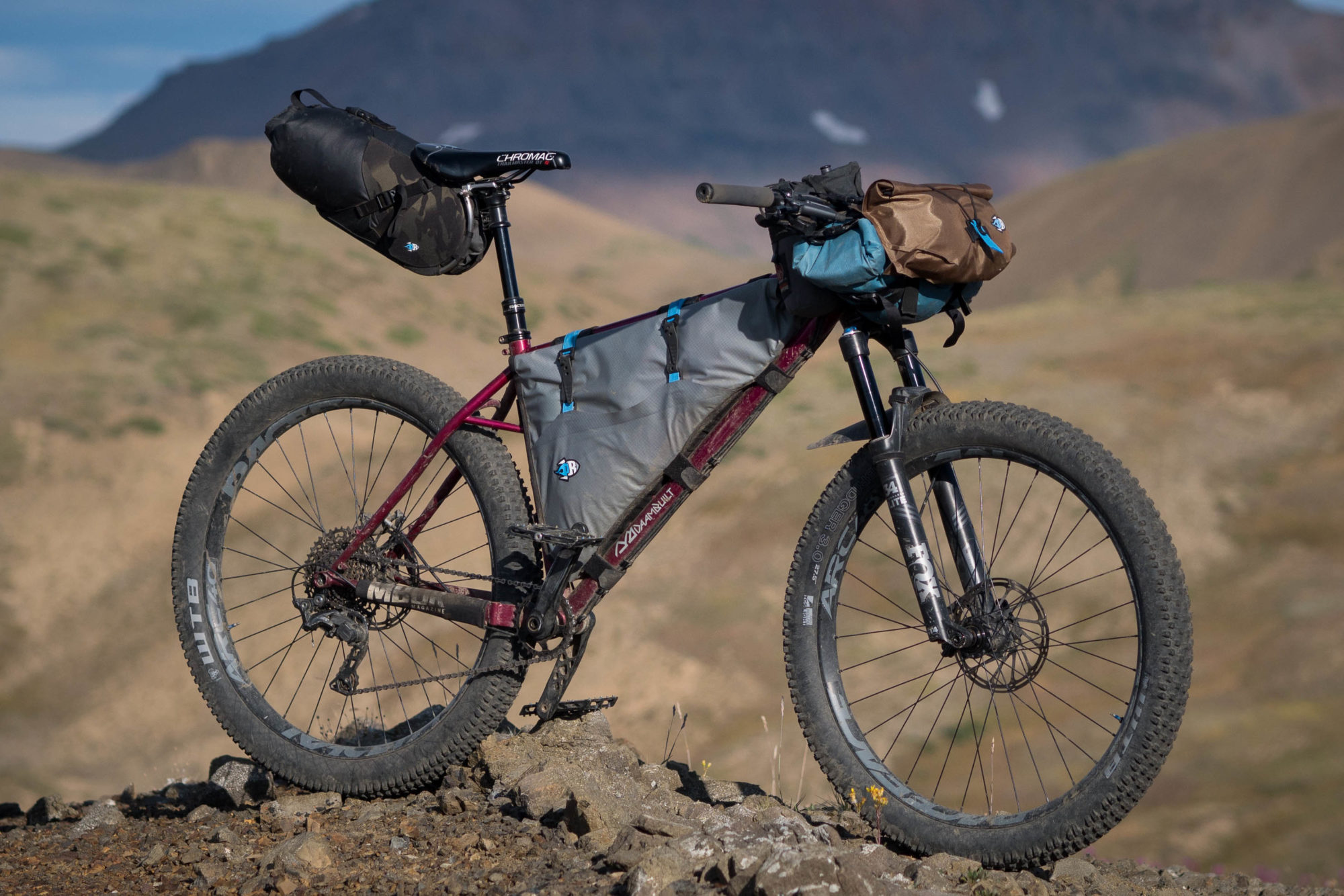
In terms of biomechanics, the most important relationship determined by a bike’s seat tube angle is the horizontal distance between the pedal at power stroke (when the crank is pointed forward) and where you sit. By shimmying your foot forward on the pedal, you’re lengthening this horizontal distance between saddle and power stroke, and effectively slackening your bike’s seat tube angle. On my custom bike, where the geometry was chosen based on my preferred mid-foot pedaling position, this is hunky dory. But, my other bikes have rather conventional geometry, with 72.5-73° seat tube angles, as has been widely used in the industry since the days of leather-strapped toe-clips. On these bikes, I find the power and efficiency provided by these Catalyst pedals – and their mid-foot placement – is mostly negated by effectively slackening my seat tube angle even further.
I have all the usual complaints about slack seat tube angles: the increased pedal to saddle set-back seems to promote a slower cadence, requiring higher leg force to push the same number of watts. Going up steep climbs, I feel like my weight is too far back to push downward effectively on the pedals, so it feels like I’m hanging off my handlebar, trying to keep my weight forward. It gets exhausting. Now, I personally blame the frame geo more than the pedals – it’s not the pedals’ fault that bike geo is still catching up to “the science”. The science that has encouraged people to move cleats back on clipless shoes, and has debunked the myth that there are any efficiency gains to be had from “pulling up” on the pedals on the upstroke. Turns out even the world’s best racers don’t do that; the pulling muscles are weak and easily tired out. Humans didn’t evolve to do that.
It’s not the pedals’ fault, but if you feel like you’re already finding your seat tube angle a bit slack, you may want to steer clear of Pedaling Innovations. The Catalyst pedals will only exacerbate the problem. If you’re using a set-back seatpost, or your saddle is slammed back on the rails, it should be relatively straightforward to shift your saddle forward as you shift your feet forward on the pedals.
- Platform size 128mm x 95mm
- Overall pedal size 143mm length, 105mm width, from crank arm
- Thickness 16mm
- Weight 505g/pair
- Bearing architecture inboard bushing plus two outboard bearings
- Price $99
- Colours available Black, Grey, Red, Blue
- Manufacturer’s Details Link
How do they compare
The most similar pedals I’ve used to the Catalyst are OneUp Components’ Composite Pedals. Though the OneUps are not as huge, and don’t come with the explicit prescription for a centered foot placement, their convex platform is well-suited to a mid-foot pedal placement, where the thickest part of the pedal rests under the arch of the foot. I like both these pedals, but I my day-to-day preference depends on what footwear I’m wearing.
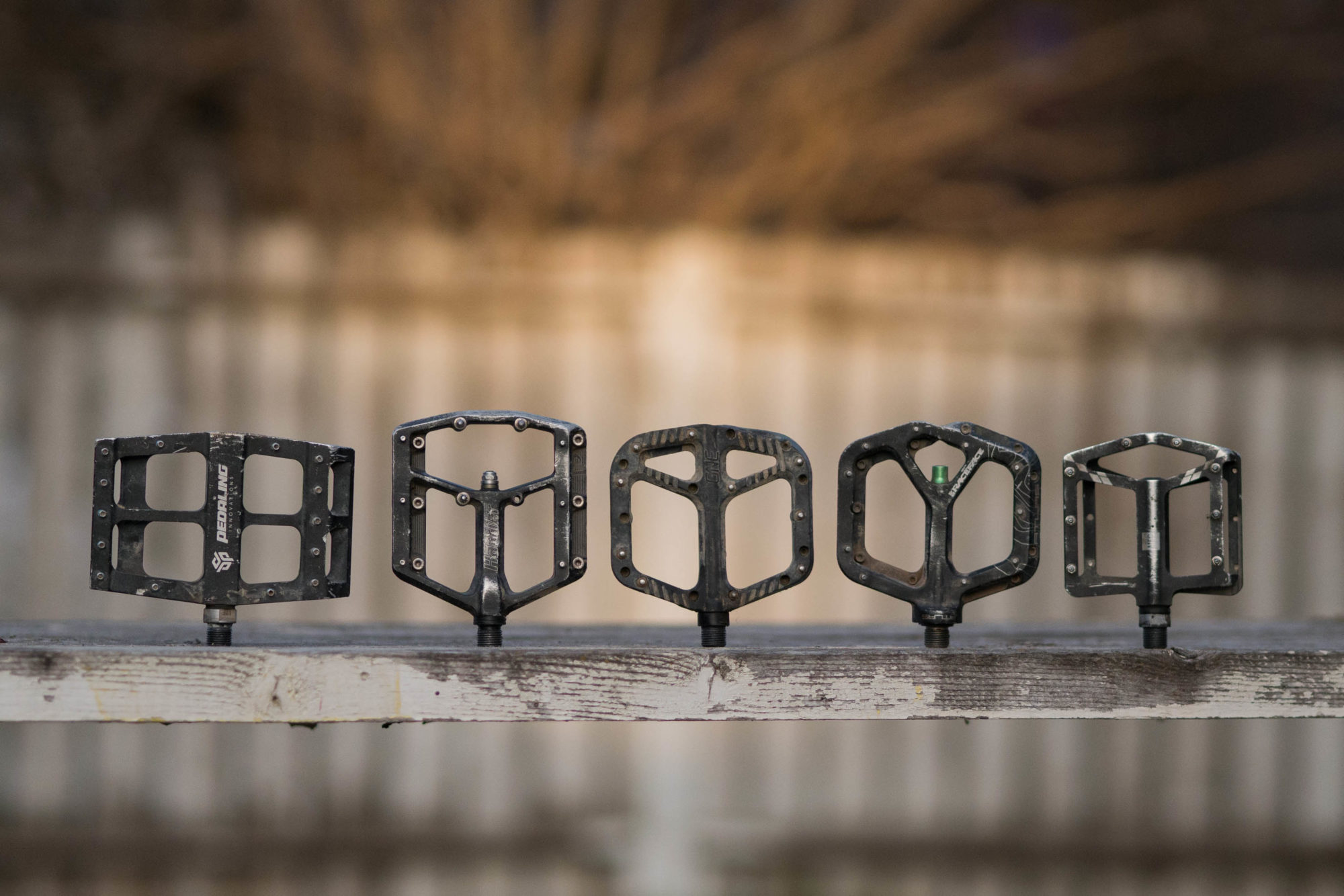
Wearing flat-bottomed riding shoes, skate shoes, or even flip flops, I find the massive length of the Catalyst exceptionally comfortable, providing support from toe to heal. With hiking or running shoes, or any shoes that have a bit of a pronounced heel lug, I prefer the OneUps. Whereas it can be hard to get a good foot placement on the Catalyst while wearing shoes with a gap between forefoot tread and the heel tread, the convex shape of the OneUps tends to immediately nestle into that gap. That said, I’ll continue to seek out flat-bottomed shoes specifically to use with Catalysts, because the advantages of their size are notable. Beyond the comfort, the full span from ball of foot to back of arch means that rather than spending energy flexing the sole of my footwear with each pedal stroke, 100% of that leg pushing goes into moving the bike forward. I swear it’s more than a placebo.
In terms of grip, both options offer similar traction with 10 well-distributed pins per side on the OneUps and 14 grub screw style pins, clustered more fore and aft, on the Pedaling Innovations. Though neither option quite achieves the class-leading traction like you might find on Race Face Atlas or Spike Spanks, both of which have much sharper pins, the Catalyst’s traction is still adequate for riding down rough trails on a hardtail. That is, unless you plan to occasionally ride with the ball of your foot over the spindle. With this more traditional foot placement, the Catalyst offers pretty poor traction as it lacks traction pins in the center of the pedals. Similarly, in wet weather, the short pins (the pedals are delivered with two lengths of pins) can feel inadequate, as the blank middle section of the pedal can get slippery.

Pros
- Mid-foot pedaling position, combined with full arch support feels legitimately more efficient
- Bearing/bushing durability has been good after thousands of kms
- Relatively narrow width (95mm side-to-side) helps reduce pedal strikes
- 30-day money-back guarantee trial period
Cons
- Heavy
- Traction could be better
- Grub screws are easily rounded from pedal strikes
- Don’t pair that well with shoes that have a defined heel lug
- Mid-foot pedaling position can cause cascading changes to riding position
- 6mm Allen socket on inside of spindle can make it hard to remove pedals on a trip using just a multi-tool (compared to 8mm socket on other high-end pedals)
- Your friends will make fun of you
Wrap Up
I am an advocate for using flat pedals and non-clipless shoes for bikepacking. There a lot of benefits to wearing regular shoes on a trip that might involve as much living off the bike and hike-a-biking as actual time on the pedals. And I really like the Pedaling Innovations Catalyst for bikepacking. It makes riding in regular shoes, which often lack the stiff soles of clipless shoes, feel much more efficient and comfortable.
I’ll go even further, since I always ride flats. I’ve long suspected that the efficiency gains promised by clipless were mythical at best, and most likely the result decades of marketing groupthink. As much as Pedaling Innovations’ uber-geek, quasi-scientific marketing makes me cringe, a lot of it is not far off from what I experienced on these pedals. Those who have subscribed to the latest trend of touring in soft-soled sandals would do well to use Catalyst pedals. Generally, they pair beautifully with any flat-bottomed shoes. Just be sure to consider the effect that moving your feet forward on the pedals might have to your riding position/body geometry.
The concept behind the Catalyst pedal has proved worthy of further iterations. I hope that the folks at Pedaling Innovations take the Catalyst as a solid proof of concept and continue to improve it as a pedal by experimenting with other pin layouts, moving away from the grub screw pins, and generally seeking to have them competitive with the best pedals out there in terms of traction, weight, and durability. Pedaling Innovations has created a pedal that is exceptional only for its size. Shrunk to a normal size, they are simply one of VP’s many mid-range options that never get reviewed. For now, the concept is excellent, but the execution is merely average. Fortunately, we’ve reached a high average in 2018.
Please keep the conversation civil, constructive, and inclusive, or your comment will be removed.
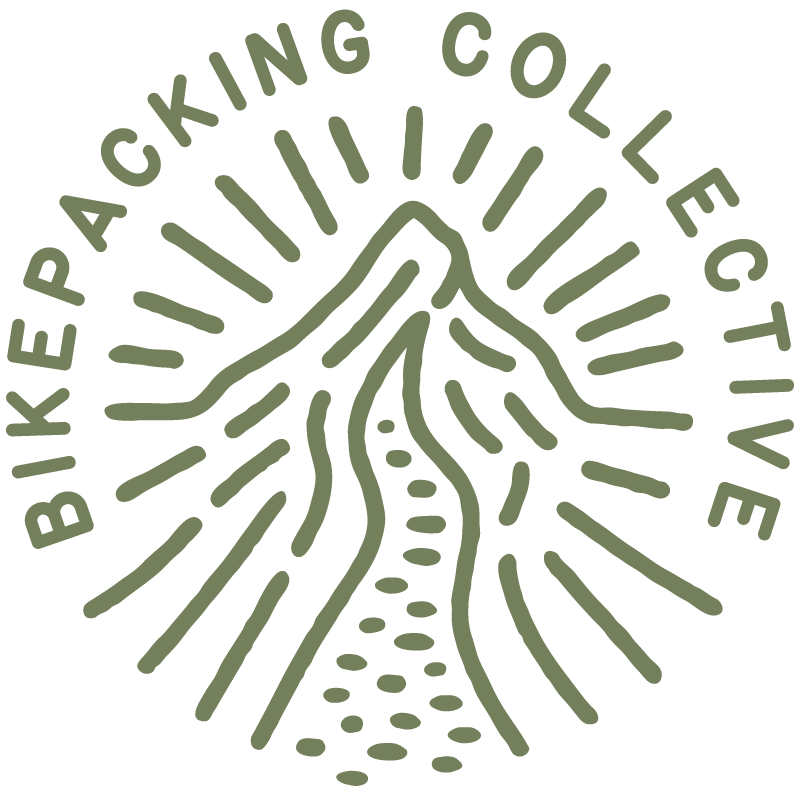
We're independent
and member-supported.
Join the Bikepacking Collective to make our work possible:







